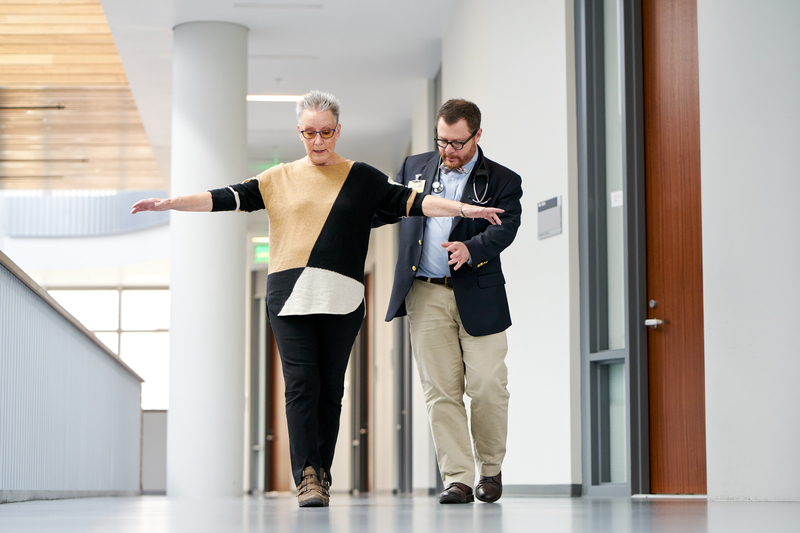Vestibular Physical Therapy at UCSF Balance and Falls Center

Vestibular physical therapy is a specific branch of physical therapy that is designed to help patients with problems with dizziness and imbalance. We are fortunate at UCSF to work with a group of physical therapists who have special expertise in this area. To understand why someone has imbalance or dizziness, they will perform a comprehensive assessment, looking at all the various factors that are required for good balance, including sensory input (from the eyes, inner ear, and skin/joint sensation), muscle strength, posture, gait, ability to recovery from loss of balance, and cognitive function. That will allow a therapist to from a treatment plan, that can address any weaknesses.
For a great overview of the vestibular system, please watch this video of the vestibular rap- written and performed by Erica Pitsch, PT, MPT, DPT, NCS at UCSF Balance and Falls Center.
Specific areas that a therapist may want to focus on include:
Gaze Stability Excercises
These exercises are important when one or both of the inner ears have been damaged, resulting in a loss of vestibular function. In addition to dizziness and imbalance, people with a loss of vestibular function can have trouble seeing clearly- especially when they are moving. To them the world may appear jumpy. To address this problem, patients are prescribed exercises to teach the brain how to focus clearly again using other body systems to make up for lost function. The key ingredients are maintaining a clear focus, quick head movements, and progressive difficulty. The therapist is essential for guiding patients on how to monitor their symptoms, performing the exercises accurately, and progressing them appropriately.
Gait and Balance training
Exercises help with balance, walking, and recovery strategies when balance is lost. If the patient has a high fall risk and severe balance loss, learning to use an assistive device may be necessary.
Habituation
This refers to repeated exposure to stimuli that can be bothersome, like quick head movements. The goal of this is to get someone more used to things that they need to do in order to function well, but have been avoiding because of discomfort. The concept is that certain avoidance behaviors can be maladaptive in the long run, and therefore must be carefully rehabilitated.
General conditioning
In some cases, it’s also necessary to work on general muscle strength, endurance, and physical health, all in order to improve functioning.
Particle repositioning exercises
In one form of dizziness, called BPPV (benign paroxysmal positional vertigo), loose crystals in the inner ear cause vertigo when someone moves into certain positions (typically rolling over in bed). This is treated with repositioning maneuvers, and our team of physical therapist are all experienced with treating BPPV in this way.
